Earlier this month, when Washington should have been building on the success of the U.N. Security Council’s unanimous passage of the most biting sanctions ever levied against North Korea, senior officials instead focused the international spotlight on their own inability to speak with one voice about U.S. strategy toward North Korea. The muddled effort sent the stock market downwards, undermined the credibility of presidential threats, and strained U.S. relations with allies. To get the U.S. approach to North Korea on track, the administration should take a page from the president’s book, “The Art of the Deal.”
First, a quick recap of recent events: On August 8, the president reacted to a Washington Post report about North Korea’s nuclear strike capabilities with an impromptu warning of “fire and fury” against North Korea if it further threatened the United States. On August 11, he doubled down, declaring that U.S. military options for striking North Korea were “locked and loaded.”
After initially tamping down press speculation about potential conflict with North Korea, Secretaries Mattis and Tillerson co-wrote an op-ed in The Wall Street Journal on August 14 laying out the tenets of the U.S. “peaceful pressure campaign.” Two days later, then-White House strategist Steve Bannon said there were no viable military options for dealing with North Korea, thus defanging the president’s threats.
The following day, Chairman of the Joint Chiefs of Staff Dunford stated that war on the Korean Peninsula would be “horrific” but added that allowing Pyongyang to develop nuclear capabilities was “unimaginable” and, therefore, the Department of Defense was developing “viable military options.” National Security Advisor McMaster also publicly questioned whether deterrence theory applied to North Korea and suggested the need to prepare for preventive war should diplomacy fail.
Such vacillations in U.S. declaratory policy come at a cost. The S&P 500 dropped 1.4 percent, or roughly $300 billion, during the week of August 7 on fears of instability in East Asia. South Korean President Moon Jae-in declared publicly that he would not allow the United States to initiate strikes against North Korea without his consent, thereby magnifying the gap between Washington and Seoul and feeding into North Korea’s desire to undermine the U.S.-South Korea alliance. The sequence also gave Chinese President Xi Jinping the opportunity to act as elder statesman, counseling the president in an August 11 phone call to avoid reckless words or actions.
At a broader level, by issuing threats unaccompanied by any observable shift in U.S. force posture, military preparedness, or consultation with allies about military operations, President Trump reinforced an emerging narrative in Northeast Asia that he is a “paper tiger” whose words are disconnected from actions. In degrading the presidential bully pulpit, the president increased the risk that a future adversary will discount his threats as bluster and take actions that challenge top American national interests, thus risking rapid escalation.
The president and his advisors could argue that the missile strikes against Syrian targets in April proved the perils of crossing U.S. redlines. However, Syria’s incapacity to project power makes it a poor comparison to North Korea. The president also has taken credit for causing Kim Jong-un to stand down on threats to launch missiles toward Guam, but, as my colleague Jonathan Pollack has pointed out, North Korea has recycled similar threats since 1998, so its latest decision reflects continuity, not capitulation.
The Way Forward
To right the ship, the administration will need to rededicate itself to a policy process that is rigorous in identifying objectives and disciplined in executing strategy. North Korea is too large of a challenge for any individual, even the president, to tackle on his own. It also is too sensitive of a challenge for improvisational freelancing.
In crafting recommendations to Trump, senior officials should draw lessons from his own past experiences. Although business negotiations differ from international affairs in fundamental ways, three central lessons from the president’s best-seller, “The Art of the Deal” would nevertheless provide a useful frame for advising the president on North Korea.
1Use your leverage. “The worst thing you can possibly do in a deal is seem desperate to make it. That makes the other guy smell blood, and then you’re dead. The best thing you can do is deal from strength, and leverage is the biggest strength you have. Leverage is having something the other guy wants. Or better yet, needs. Or best of all, simply can’t do without.” – “The Art of the Deal”
The president’s oscillations between calling Kim Jong-un a “smart cookie” and threatening him with “fire and fury” lend the impression that he is grasping for something—anything—to alter the trajectory of events.
North Korea remains a country with one strength (its nuclear and missile programs) and many weaknesses. It also has consistently demonstrated rational behavior, if you accept that its overriding objective is to protect the Kim family’s reign and that all other interests are subordinate.
Given both North Korea’s inherent weaknesses and Kim Jong-un’s survival instincts, the United States should avoid flailing for a near-term “solution” on North Korea. A 30-year knot will not be untied in three weeks, or even three months. Rather, the United States should approach the problem knowing that it holds the keys to what North Korea most covets: diplomatic recognition and international legitimacy; lifting of sanctions and support for North Korea’s economic development; a reduced U.S. presence and a freer hand to deal directly with Seoul on the future of the Korean Peninsula; and diversification of its external relationships in order to lower its dependence on Beijing for its survival.
2Deliver the goods. “You can’t con people, at least not for long. You can create excitement, you can do wonderful promotion and get all kinds of press, and you can throw in a little hyperbole. But if you don’t deliver the goods, people will eventually catch on.” – “The Art of the Deal”
The president’s threats of “fire and fury” and being “locked and loaded” made for good print, but bad tactics. One golden rule of authoritarian regimes is that they are loathe to bend to public and visible threats, because doing so risks inviting internal accusations of weakness and capitulation. Authoritarian leaders are allergic to such accusations. Kim Jong-un is no exception.
Making loud and hollow threats…is the diplomatic equivalent of a con. It won’t work.
If the Trump administration wants to push for negotiations, there are ways for Washington to “deliver the goods” in a manner that leaves room for Kim Jong-un to move toward dialogue without appearing to capitulate to U.S. pressure. Making loud and hollow threats will have the opposite effect. It is the diplomatic equivalent of a con. It won’t work.
3Play to your strengths. “There are two things I’ve found I’m very good at: overcoming obstacles and motivating good people to do their best work.” – “The Art of the Deal”
The president needs to apply these gifts to the policy process on North Korea. He does not need to forge a silver bullet by himself. Instead of trying to rattle Kim Jong-un, the president should focus his energies on directing his administration to set clear and achievable objectives, develop a coherent strategy for achieving them, and hold everyone accountable for executing the strategy.
U.S. national interests will be best protected if the administration unifies around a single coherent strategy. Elements of such a strategy could include cutting off North Korea’s access to international finance, disrupting North Korea’s illicit procurement networks, and rallying international support for an achievable objective—such as freezing and capping North Korea’s nuclear and missile programs—all the while working with Seoul and Tokyo to enhance capabilities to deter and contain North Korea in the event that diplomacy fails.
Avoiding conflict and curbing the threat from North Korea will require patience, persistence, and poise in the face of inevitable setbacks. Progress may be slow and uneven. Nevertheless, to move efforts to address North Korea in a productive direction, the president and his team would do well to follow some of the president’s own past advice.
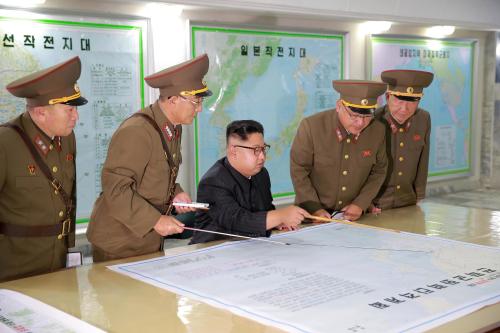
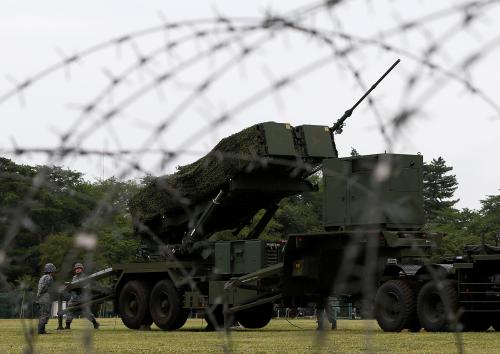
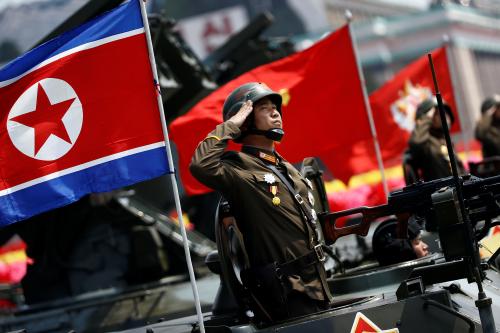

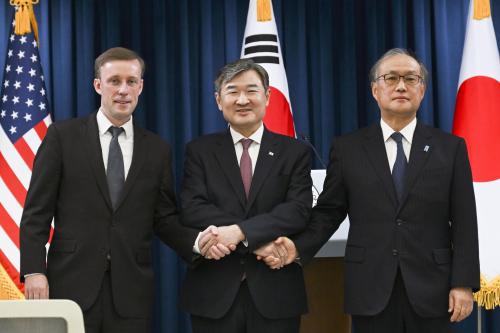
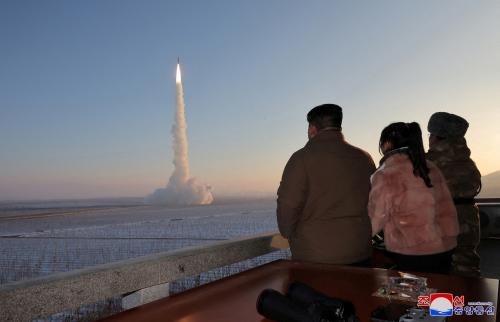
Commentary
How should the Trump administration deal with North Korea? Follow the president’s past advice
August 25, 2017